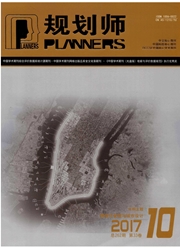
欢迎您!东篱公司
退出

 中文摘要:
中文摘要:
我国城市化进程的日益加快带来了普遍的城市生态环境问题,如热岛效应。然而,在以往大规模的城市化建设过程中,规划师在编制规划时并未考虑预留通风廊道建设用地,当前已难以满足城市规划应对逐年加剧的热岛效应的需求。文章以福州市区为例,通过应用遥感、地理信息技术和构建气候学及生态学模型分析现有风环境的特点,并结合夏热时段山谷风和海陆风的时空特点,找出城区入风口,挖掘现有通风廊道,为潜在通风廊道规划提供决策依据。
 英文摘要:
英文摘要:
A number of ecological problems have emerged in the process of fast urbanization. Urban planning has not given full consideration to wind corridors, and this has worsened heat island effect. The paper uses remote sensing, GIS technology, and climate model to analyze wind environment, finds wind entrance, wind corridor, and provides reference for future planning.
 同期刊论文项目
同期刊论文项目
 同项目期刊论文
同项目期刊论文
 期刊信息
期刊信息
